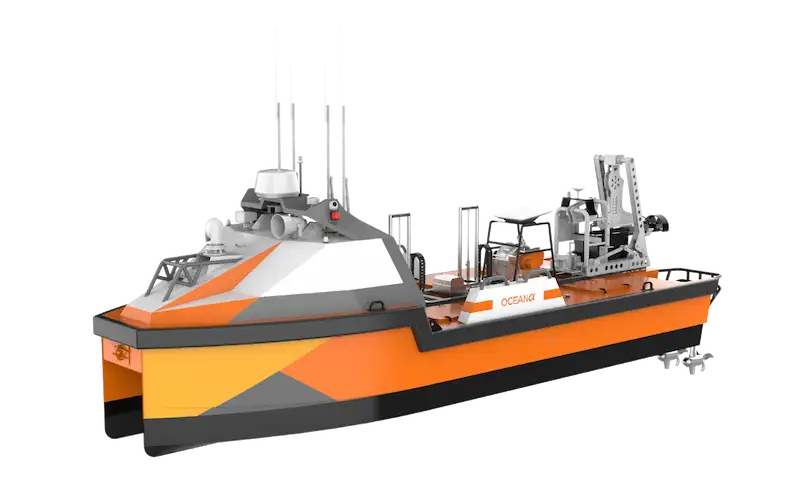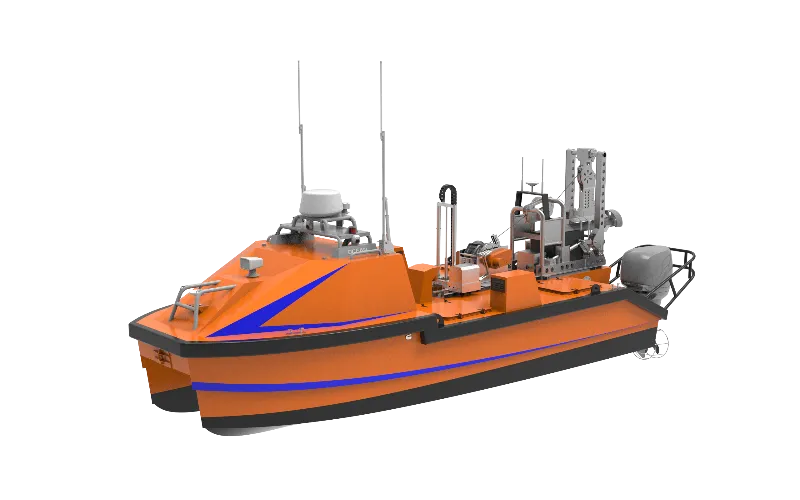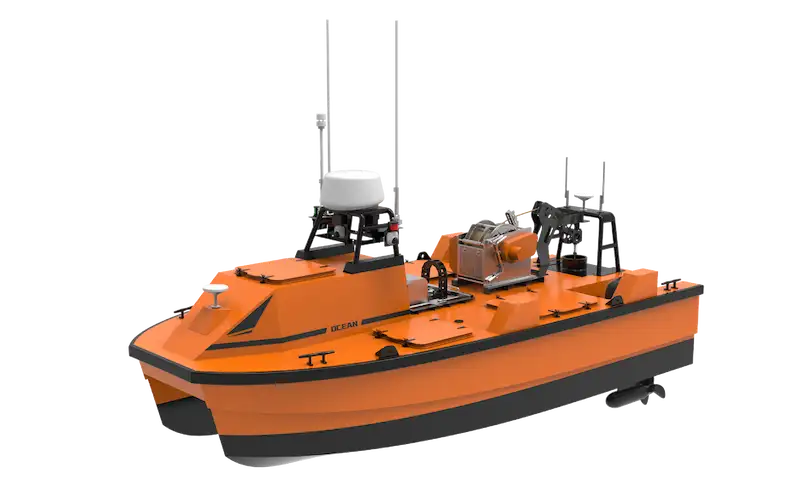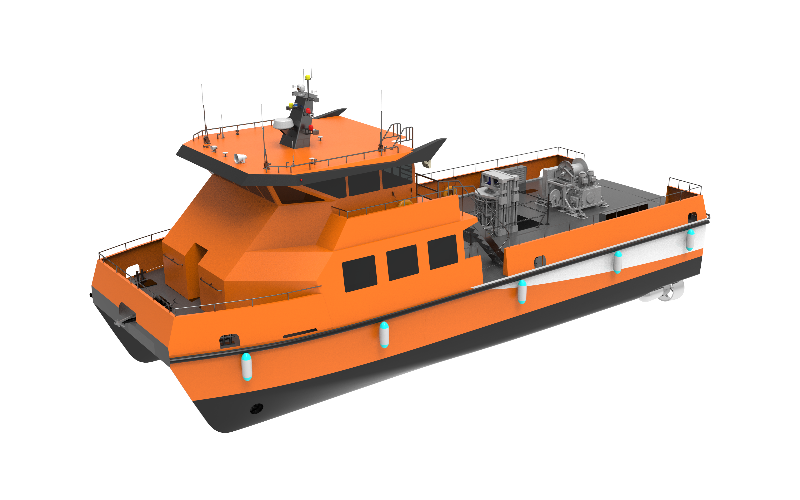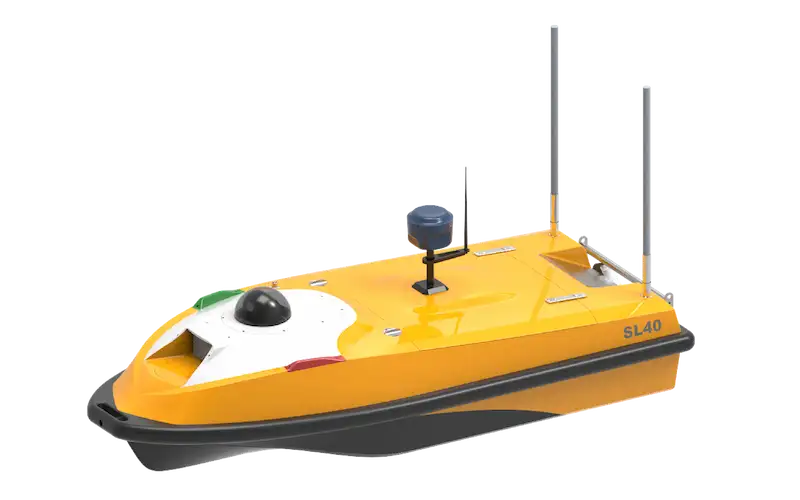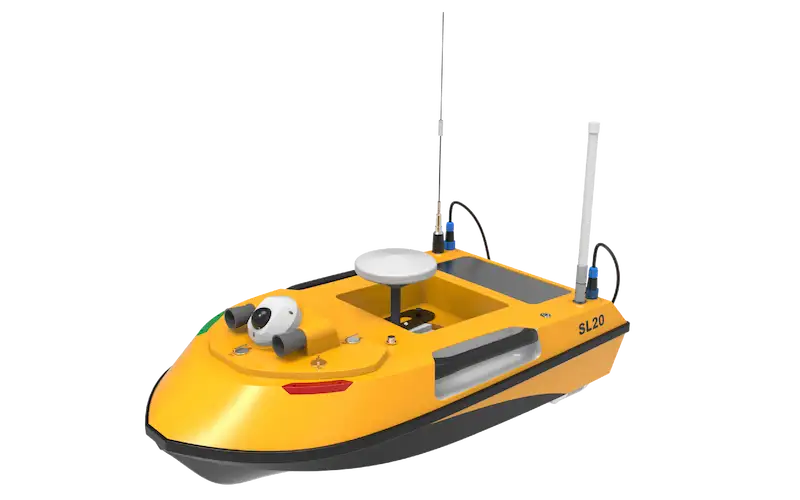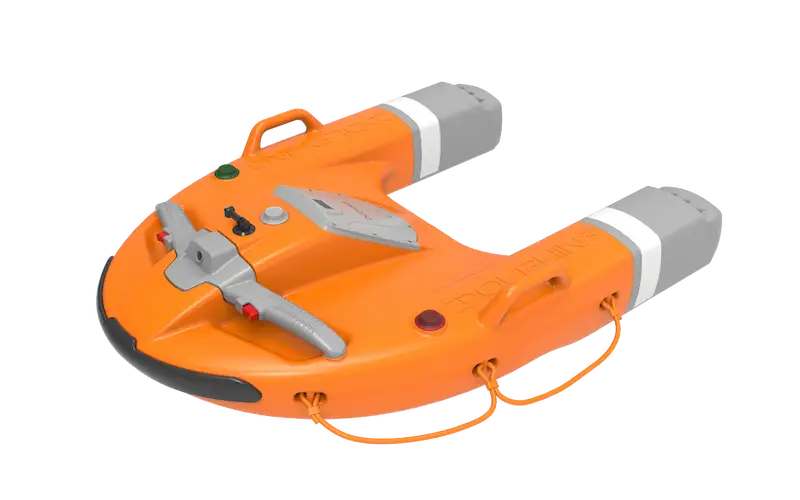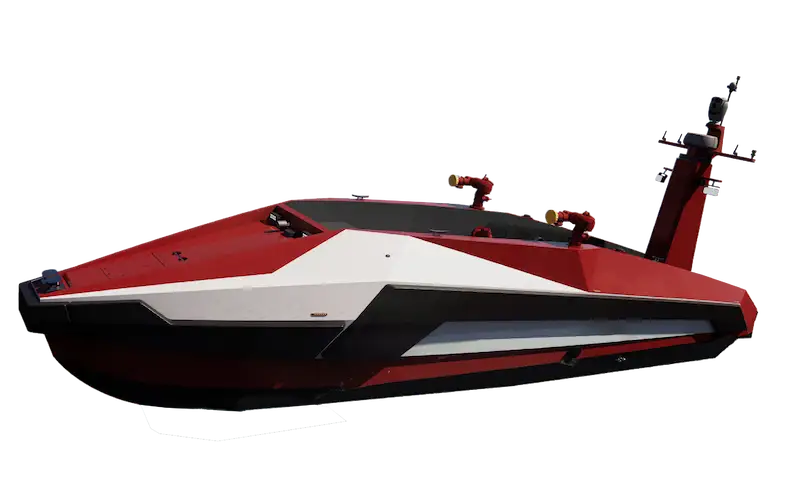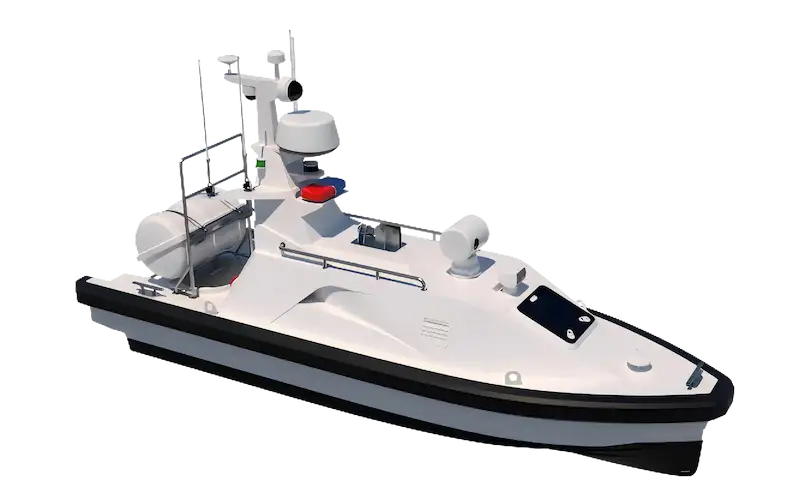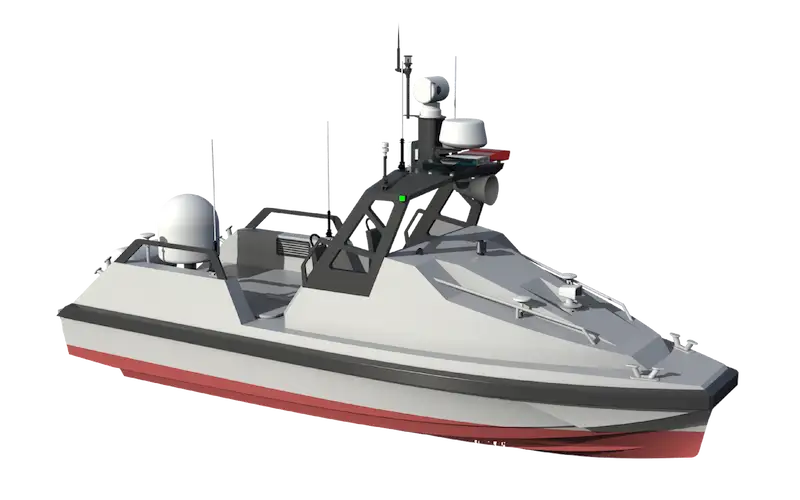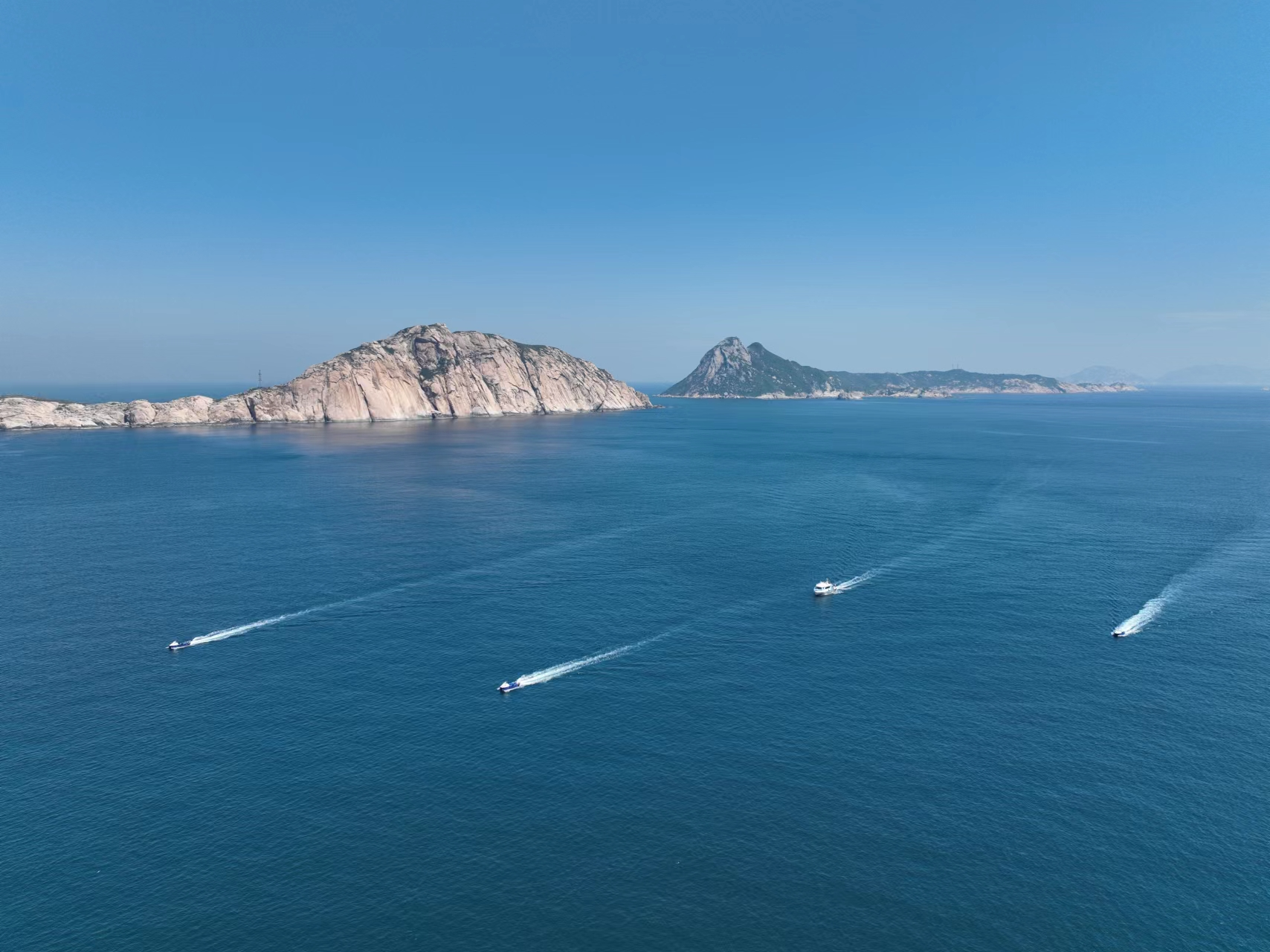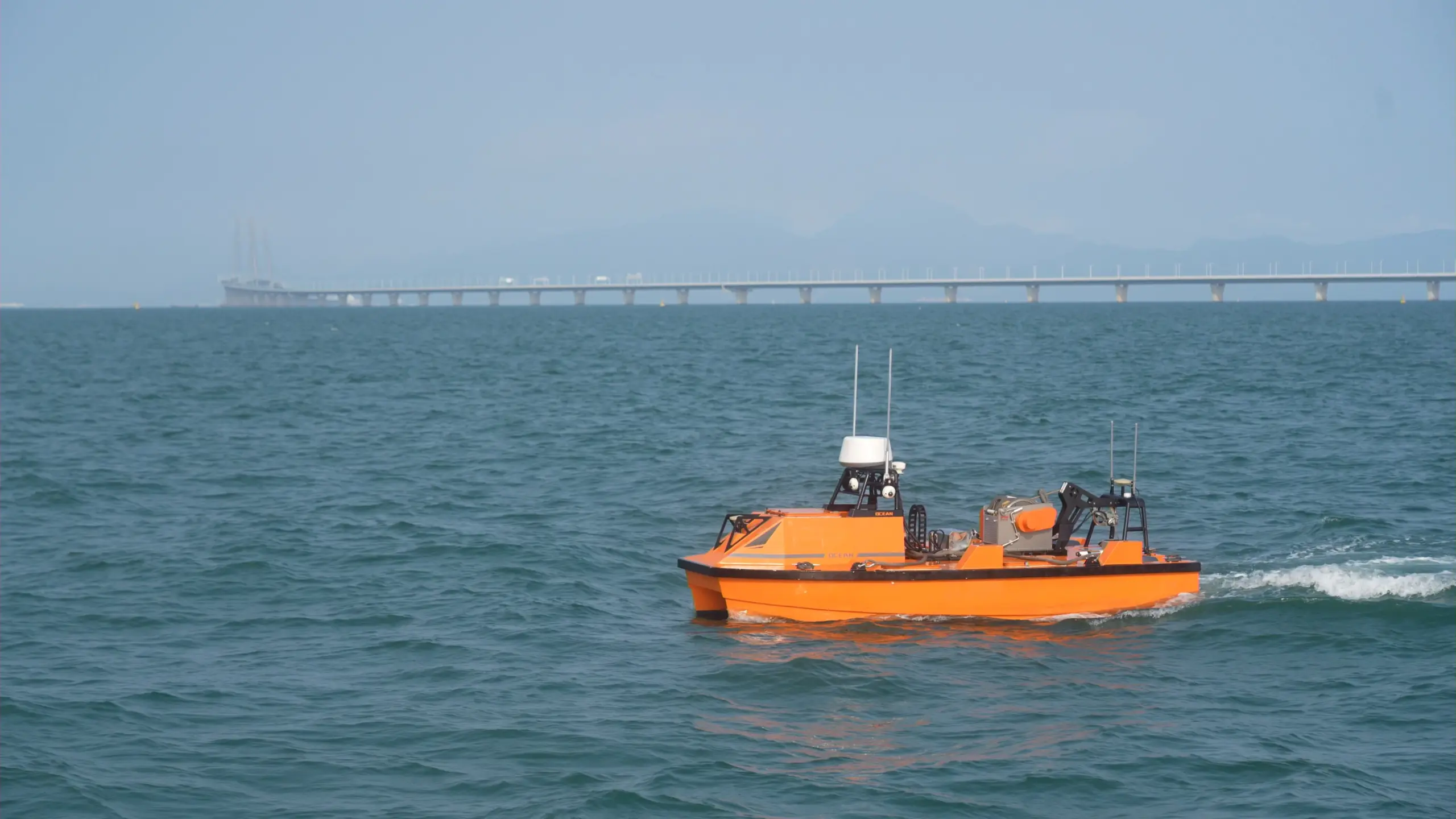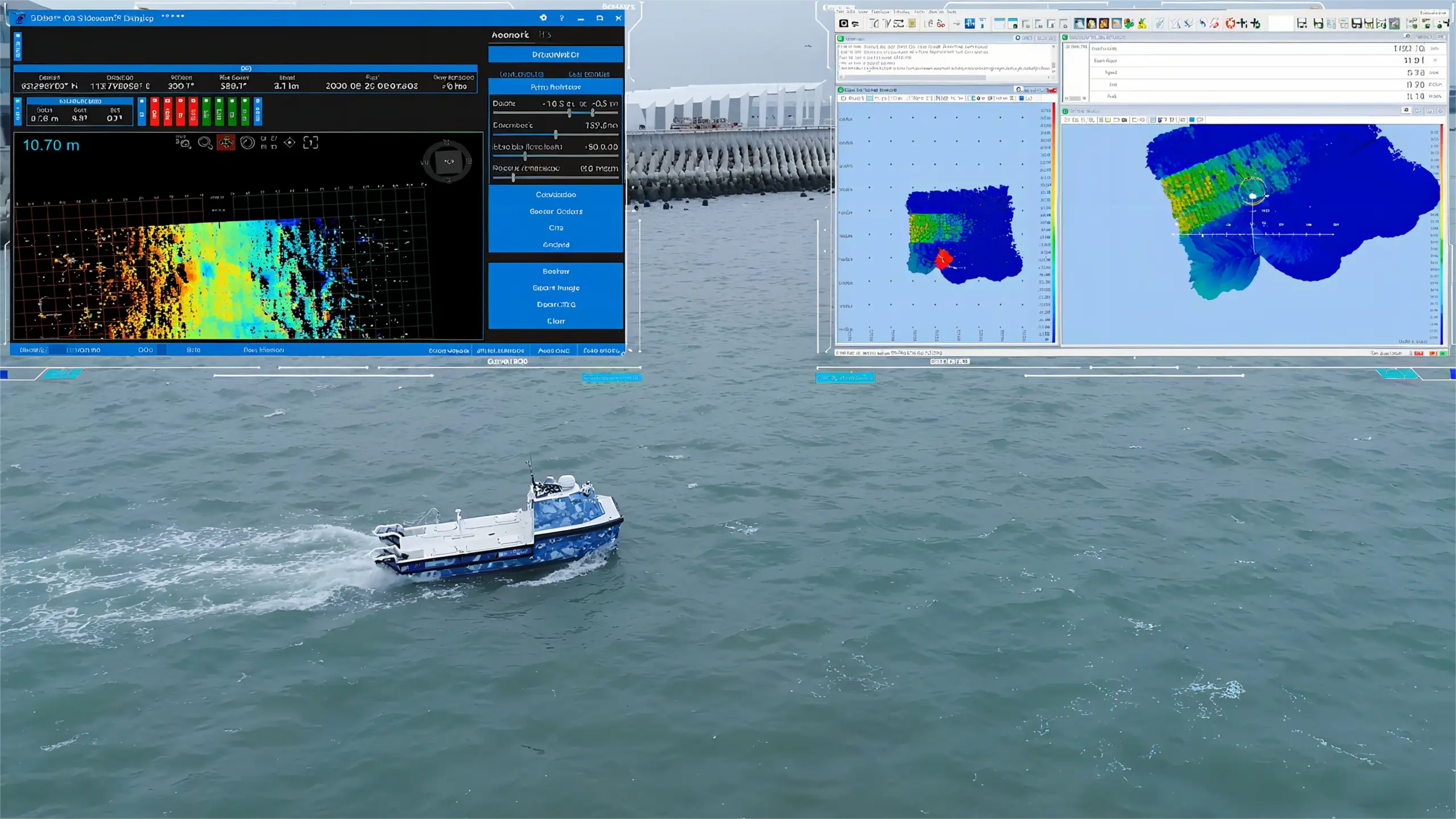L25 USV for Shallow Water Subsea Pipeline Survey
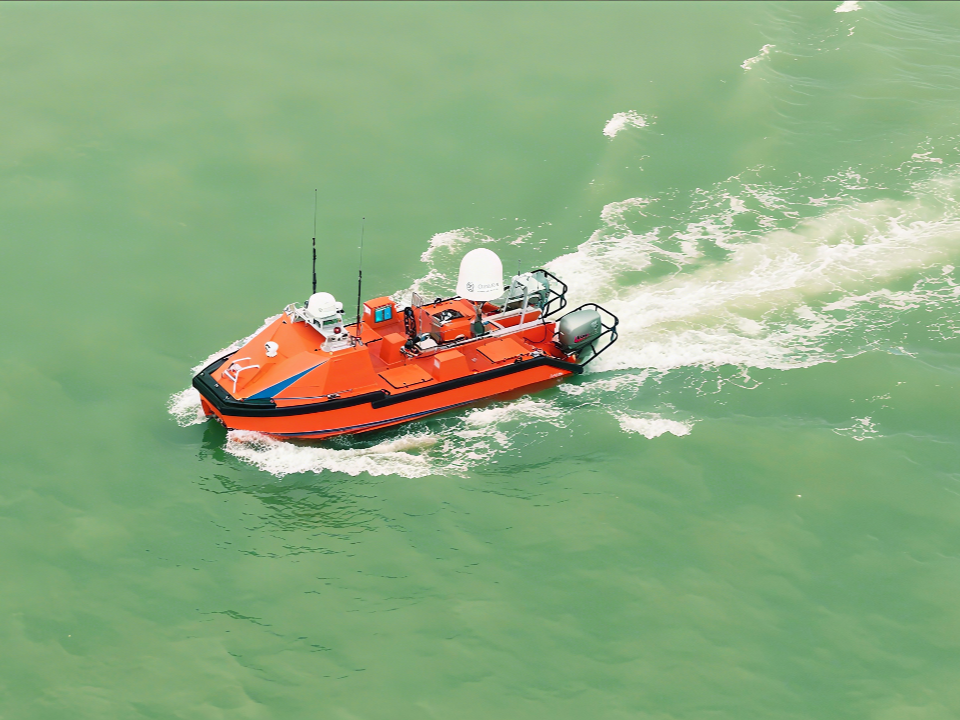
Project Background
Subsea pipelines are critical infrastructure for offshore oil and gas transportation. Accurate pipeline surveys are essential to determine their location, burial depth, exposure, and potential suspensions. However, in shallow landing zones, pipelines face risks from tidal forces, wave action, and frequent fishing activities. Conventional survey vessels struggle in these areas due to shallow water depths, resulting in limited or missing data.
The USV Solution
L25 Unmanned Surface Vehicle (USV) offer a superior alternative with its shallow draft, high maneuverability, fuel efficiency, automated operation, and unmanned design—making it ideal for challenging shallow-water environments.
Project Execution
OceanAlpha deployed an L25 USV equipped with 3D scanning sonar and a sub-bottom profiler. The USV was remotely controlled from headquarters and tasked with surveying a shallow landing zone near a pipeline. The mission objectives included:
- Mapping terrain and obstacles around the pipeline
- Verifying the pipeline route and burial depth
Site Conditions
The survey area featured:
- Relatively shallow waters
- Maximum current speed of 4 knots
- A mix of exposed and submerged reefs, adding complexity to the operation
Survey Operation
- The USV was launched from a dock and remotely navigated to the target area, 14 km away.
- It successfully completed a 2 km pipeline survey, overcoming environmental challenges.
Results & Findings
- 3D sonar and sub-bottom profiler data met all required standards.
- The survey revealed:
- Water depths ranging from 0 to 8.6 meters, with dynamic changes due to scouring and maintenance.
- Clear identification of gravel bed boundaries and surrounding submerged reefs.
- Accurate sub-bottom data confirming the pipeline’s burial depth.
Conclusion
This project demonstrated how the L25 USV delivered an efficient, cost-effective, and safe solution for subsea pipeline inspections in shallow waters. By leveraging USV technology, OceanAlpha overcame the limitations of conventional vessels, setting a new standard for underwater survey operations.

